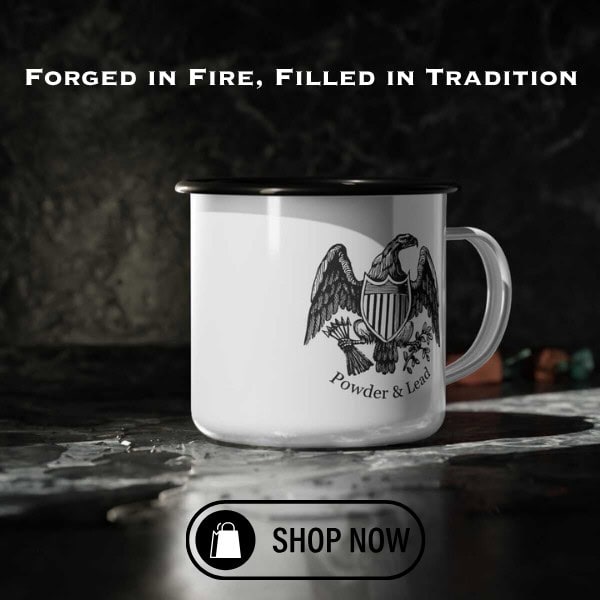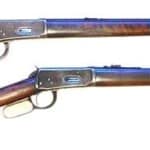
The Winchester Model 70: The Definitive Guide to "The Rifleman’s Rifle"
Few firearms in history have earned the legendary status of the Winchester Model 70. Dubbed "The Rifleman’s Rifle," it remains one of the most iconic bolt-action rifles ever produced. From its early inception to its enduring legacy in hunting, law enforcement, military service, and competitive shooting, the Model 70 stands as a testament to American firearms engineering.
Origins and Early Development
The Winchester Model 70 was introduced in 1936 as a refined successor to the Winchester Model 54, a bolt-action rifle that laid the groundwork for what would become the gold standard in American sporting arms. The Model 70 incorporated several improvements over the Model 54, including a better trigger mechanism, a redesigned safety, and improved stock ergonomics.
The pre-'64 Model 70 was heavily influenced by the Mauser 98 design, featuring a controlled-round feed (CRF) bolt, an internal non-rotating extractor, and a three-position safety mounted on the bolt shroud. These features gave the rifle exceptional reliability, making it a preferred choice for big game hunters and precision shooters alike.
The Three Major Production Eras
The Pre-'64 Model 70 (1936–1963)
The pre-1964 Winchester Model 70 is widely regarded as one of the finest production rifles ever built. These rifles were manufactured with forged steel receivers and hand-fitted parts, ensuring high-quality craftsmanship.
By the end of 1963, Winchester had produced approximately 581,471 units. Chamberings ranged from .22 Hornet to .458 Winchester Magnum, with the .270 Winchester and .30-06 Springfield becoming two of the most popular calibers. The rifle’s controlled-round feed action, combined with a smooth bolt throw and impeccable balance, cemented its reputation among serious marksmen.
The Post-'64 Model 70 (1964–1992)
In 1964, Winchester underwent a drastic overhaul of the Model 70’s design to cut production costs. The most significant change was the abandonment of controlled-round feed in favor of a push-feed action, eliminating the non-rotating claw extractor. Other cost-saving measures included the use of stamped steel parts for the trigger guard and floor plate, along with a less expensive stock finish.
These changes were met with significant backlash from the shooting community. While the rifle’s accuracy remained competitive, its perceived quality declined sharply, damaging Winchester’s once-stellar reputation. Despite the controversy, Winchester manufactured well over 600,000 post-'64 Model 70s between 1964 and 1981.
The Return to Excellence: The New Model 70 (1992–Present)
In 1992, Winchester introduced a new version of the Model 70 under the ownership of U.S. Repeating Arms Company (USRAC). In 1994, Winchester reintroduced the controlled-round feed bolt in the Model 70 Classic lineup, bringing back the beloved Mauser-style claw extractor.
Following the closure of Winchester’s New Haven, Connecticut factory in 2006, production of the Model 70 shifted to FN Herstal’s state-of-the-art manufacturing facility in Columbia, South Carolina. FN’s modernized production methods improved the rifle’s precision, and the introduction of the MOA (Minute of Angle) trigger system provided shooters with one of the most refined factory triggers on the market.
Notable Variants and Chamberings
The Model 70 has been produced in a vast array of chamberings, ranging from small varmint calibers like the .22-250 Remington to dangerous game cartridges such as the .458 Winchester Magnum. Some of the most iconic chamberings include:
- .270 Winchester – One of the most famous hunting cartridges, made legendary by Jack O’Connor.
- .30-06 Springfield – A timeless, versatile round for North American game.
- .300 Winchester Magnum – A hard-hitting choice for long-range hunting and tactical applications.
- .375 H&H Magnum – A classic African hunting cartridge, well-suited for dangerous game.
- .338 Winchester Magnum – A go-to choice for elk, moose, and bear hunters.
Modern iterations of the Model 70 include specialized versions such as the Super Grade, Featherweight, and Extreme Weather SS, each catering to different hunting and shooting disciplines.
The Model 70 in Military and Law Enforcement Service
The Winchester Model 70 was not only a favorite among civilians but also saw extensive use in military and law enforcement applications.
- U.S. Marine Corps Sniper Rifle (Vietnam War) – During the early years of the Vietnam War, Marine snipers utilized Model 70 rifles chambered in .30-06 Springfield and equipped with 8x Unertl scopes. The rifle’s accuracy made it effective in the field, but it was eventually replaced by the Remington M40.
- FBI Hostage Rescue Team (HRT) – Select law enforcement agencies, including the FBI’s HRT, used Model 70 rifles for precision marksmanship roles before transitioning to newer platforms.
How the Model 70 Compares to Other Bolt-Action Rifles
The Model 70 has long faced competition from other legendary bolt-action rifles, including:
- Remington Model 700 – Introduced in 1962, the Model 700’s push-feed action and cylindrical receiver made it a favorite for precision shooters. While less traditional than the Model 70, it has become a staple in the sniper community.
- Ruger M77 – Featuring a Mauser-style claw extractor, the M77 was Ruger’s answer to the Model 70 and remains popular among hunters.
- Savage Model 110 – Known for its affordability and accuracy, the Savage 110 introduced an innovative floating bolt head for enhanced precision.
- Mauser 98 – The granddaddy of controlled-round feed actions, the Mauser 98 served as a foundation for many great sporting rifles, including the Model 70.
Legacy and the Future of the Winchester Model 70
Today, the Winchester Model 70 remains a benchmark for quality in bolt-action rifles. Under FN Herstal’s ownership, production continues with a renewed emphasis on craftsmanship and precision engineering. The incorporation of modern materials, including stainless steel barrels and synthetic stocks, ensures that the Model 70 remains relevant for today’s shooters.
Why the Model 70 Still Stands Above the Rest
- Unrivaled Craftsmanship – The Model 70's fit and finish surpasses many competitors, particularly in the Super Grade lineup.
- Controlled-Round Feed Reliability – One of the last production rifles to offer this legendary feature.
- Versatile Chambering Options – Suitable for everything from varmints to dangerous game.
- Proven Performance – A rifle that has stood the test of time, from deer stands to war zones.
For generations, the Winchester Model 70 has embodied American ingenuity and dedication to excellence. Whether in the hands of a hunter, sniper, or competitive shooter, this rifle remains an enduring symbol of precision and reliability.
As long as precision shooting and hunting endure, so too will the Winchester Model 70.
Read more about the Model 70 here:
For discussions on the Winchester Model 70, check out the forum here.
If you know of any forums or sites that should be referenced on this listing, please let us know here.








